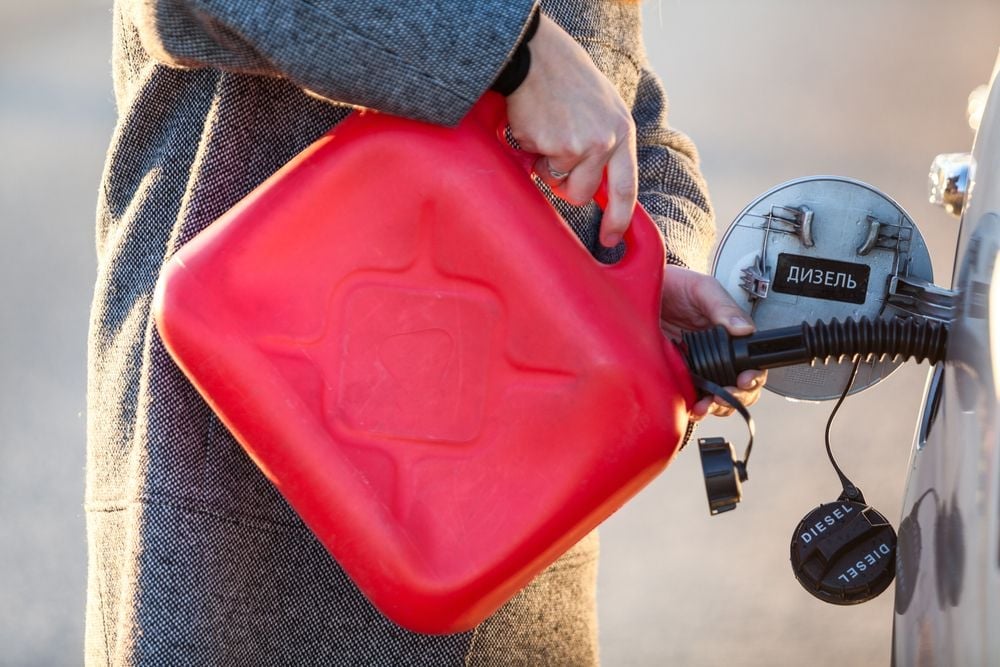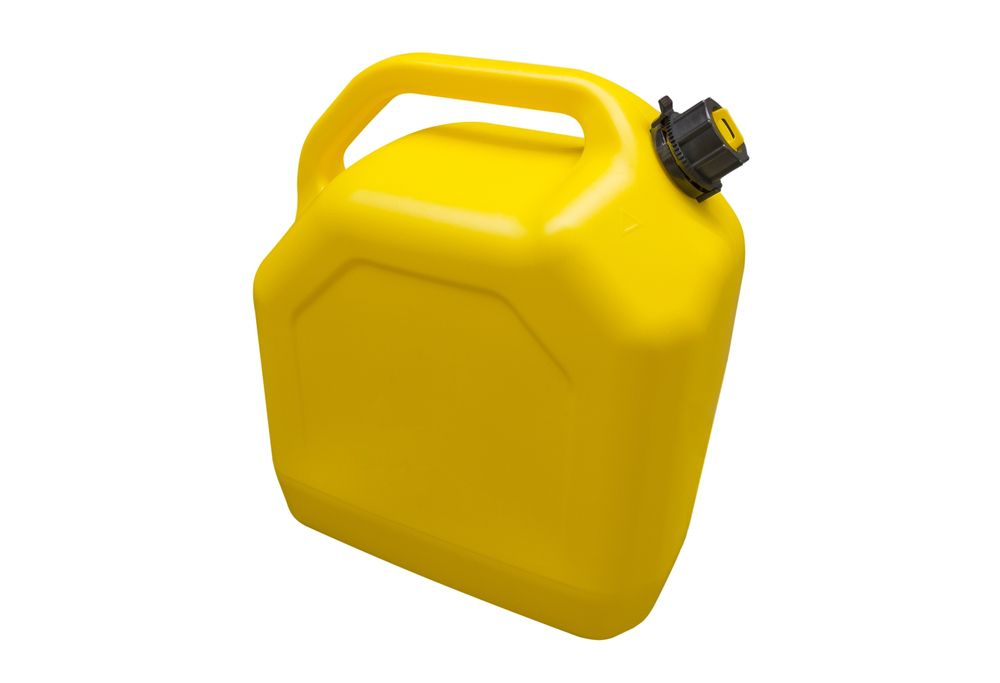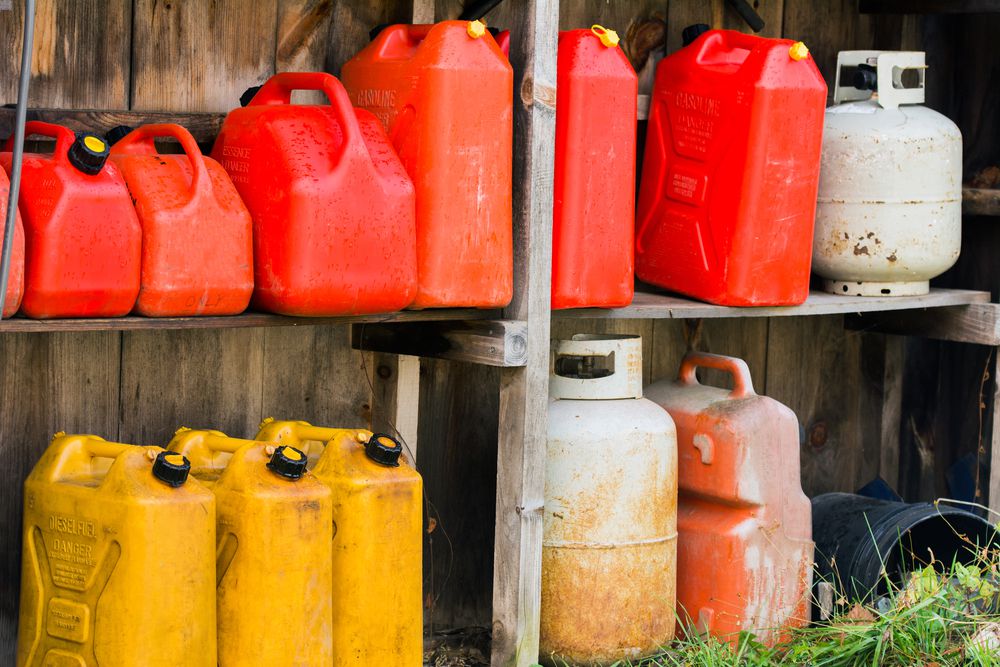
Diesel fuel is required for any vehicle with a diesel engine, but due to
the properties of diesel, there are some regulations regarding its storage
and transportation.
You can put diesel fuel in a plastic container or plastic drum.
However, if you are transporting diesel, you must adhere to the
Department of Transportation guidelines with your storage container.
It is ok to put diesel in a plastic gas can if it meets the DOT standards,
but there may be better options for you to consider to stay safe wherever
your diesel is stored.
This article will discuss whether you can put diesel in plastic gas cans.
 Gasoline containers are red.
Gasoline containers are red.
Can You Use a Gas Container for Diesel Fuel?
Flammable substances like diesel emit ignitable vapors when they reach a
certain temperature threshold, a measurement referred to as the flash
point.
With a flash point of 205 degrees Fahrenheit, diesel is considered to be
highly combustible.
Due to just how dangerous diesel is, there are several regulations put in
place by three agencies: The Environmental Protection Agency, the
Department of Transportation, and the Occupational Safety and Health
Administration.
These agencies are responsible for ensuring that people adhere to the
transportation guidelines for diesel fuel in gas cans, especially if you
are storing larger amounts of diesel for commercial use.
For example, industrial businesses like gas stations are required to store
diesel fuel in suitable tanks and secure them away from other hazards.
The material allowances for these tanks vary, with metal, plastic cans,
plastic drums, and glass all being acceptable options.
Most importantly, in industrial settings, you must keep diesel away from
heat or zones that can experience a buildup of flammable fumes. In
particular, above-ground tanks must be kept at least 50 feet away and
painted white to reduce heat absorption.
Similarly, the EPA puts regulations on storage tanks above and below
ground, and you must notify the authorities if you are storing more than
1100 gallons of fuel.
While the EPA handles the regulations on diesel fuel storage, the DOT
considers other factors to restrict diesel fuel transport.
For example, anyone transporting large quantities over 1000 gallons must
have a hazardous materials endorsement on their commercial driver's
license, and each diesel fuel tank cans be stored with the proper vent
caps.
The tanks used for fuel transport must also be inspected every month to
detect any sign of a drip in the fuel cans or the presence of water when
storing diesel fuel.
 Diesel containers are yellow.
Diesel containers are yellow.
Proper Diesel Fuel Storage
There are six types of permissible fuel containers, regardless of whether
you're transporting diesel for commercial or personal use, all of which
must meet certain specifications outlined by the DOT:
POP packaging
Approved metal containers 5 gallons or less
DOT-approved Plastic drums under 60 gallons
DOT-approved Metal drums under 60 gallons
Safety cans less than 5 gallons
Certain plastic and high-density polyethylene container
Storing Diesel Fuel in Plastic Gas Cans
At its base level, there's nothing wrong with putting diesel fuel in a
plastic gas can, but it's worth noting that some gas cans might not be
suitable for holding diesel and can cause it to break down over time.
Similarly, you should avoid using the fuel container if it is starting to
deteriorate or if there is water in the bottom of it.
Any cans with brass, zinc, tin, lead, or copper are hazardous and shouldn't
be used to store diesel. These can trigger the ignition and poses a serious
hazard to anyone around.
In addition, always make sure you dump out any gasoline and rinse the
container thoroughly before you add diesel to the gas can. Mixing the two
will be detrimental to any machine (including your car engine) designed to
run exclusively on diesel fuel or solely on gasoline.
 Red gasoline containers above yellow diesel fuel containers.
Red gasoline containers above yellow diesel fuel containers.
Color Coding and Diesel Storage
If you store any small amount of oil, you must stick to the color coding to
avoid confusion.
Diesel cans are always the yellow ones, while gas is always stored in
red containers. Blue containers are reserved for kerosene.
While you don't need to stick to this color coding in your personal
storage, it's ideal for safety and to ensure you don't put diesel in a gas
engine by accidentally using the red ones. When you fill up at the pumps,
make sure to avoid this mix-up!
It can still cause you some frustration at the gas station, though.
If you take a red can and ask for diesel fuel, the gas station might not
let you use the pump simply because the container is not correctly
color-coded to store diesel.
Final Thoughts
At the end of the day, there's nothing to worry about if you're using your
red plastic cans to store liquid diesel fuel. Still, it might be worth
spray painting the container yellow to remind you that it's diesel.
The regulations for the proper storage of diesel fuel are limited mainly to
industrial storage, such as gas stations.
Regardless, if you're transporting diesel, you must store it in an
appropriate yellow can for proper fuel storage. To ignore the guidelines
when you store diesel fuel is to risk injury to yourself and others on the
road. Plastic is suitable for storing diesel fuel as long as it falls
within the DOT guidelines.